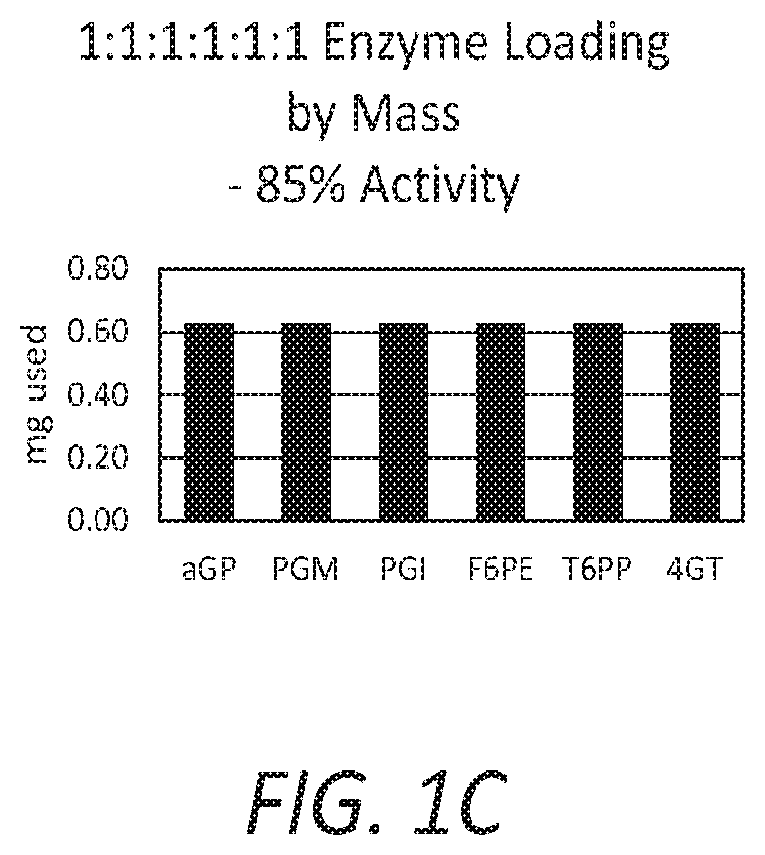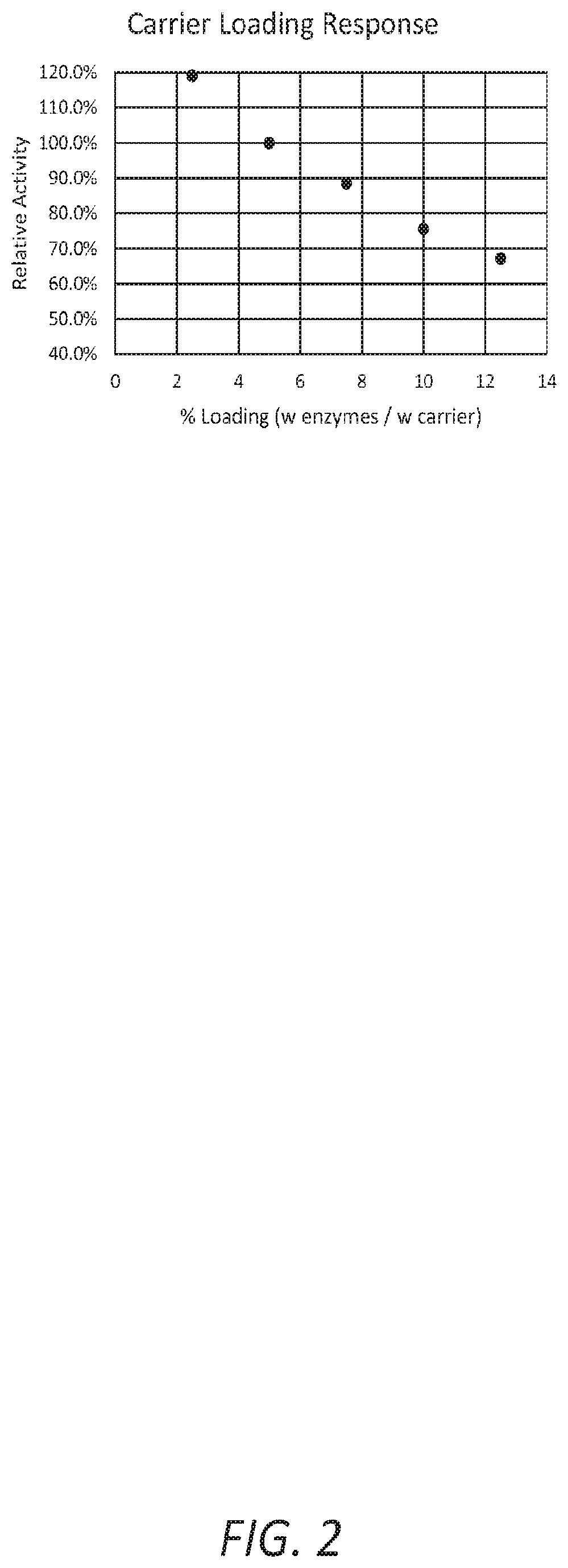Immobilized enzyme compositions for the production of hexoses
a technology of immobilized enzyme compositions and hexose monosaccharides, which is applied in the direction of enzymology, rasemaces/eimerases, transferases, etc., can solve the problems of cost-in-use of enzymes and obstacles to commercialization
- Summary
- Abstract
- Description
- Claims
- Application Information
AI Technical Summary
Benefits of technology
Problems solved by technology
Method used
Image
Examples
examples
[0050]Example 1. Evaluation of enzyme carriers. Enzyme carriers were evaluated for relative reaction rates of enzyme compositions for producing tagatose, as well as for their effect on enzyme stability. With those objectives in mind, the following enzyme carrier materials were evaluated: Four branded phenol-formaldehyde matrix resins (DUOLITE™ A568, DUOLITE™ A561, DUOLITE™ PWA7, AmberLite™ FPA54); Two branded polystyrene resins (Lifetech™ ECR1640 and LifeTech™ ECR1504); Two branded polymethylacrylate resins (Lifetech™ ECR8309M and Chromolite™ D6154); and a branded controlled pore glass resin (EziG Opal™).
[0051]DUOLITE™ A568 (DuPont) Ion Exchange Resin is a highly porous, granular, weak base anion exchange resin based on crosslinked phenol-formaldehyde polycondensate. Its hydrophilicity and controlled pore size distribution make it the most suitable resin to be used as an enzyme carrier in many bioprocessing applications. The ionic strength, pore volume, pore size, and particle size ...
PUM
| Property | Measurement | Unit |
|---|---|---|
| Temperature | aaaaa | aaaaa |
| Temperature | aaaaa | aaaaa |
| Fraction | aaaaa | aaaaa |
Abstract
Description
Claims
Application Information
 Login to View More
Login to View More - R&D
- Intellectual Property
- Life Sciences
- Materials
- Tech Scout
- Unparalleled Data Quality
- Higher Quality Content
- 60% Fewer Hallucinations
Browse by: Latest US Patents, China's latest patents, Technical Efficacy Thesaurus, Application Domain, Technology Topic, Popular Technical Reports.
© 2025 PatSnap. All rights reserved.Legal|Privacy policy|Modern Slavery Act Transparency Statement|Sitemap|About US| Contact US: help@patsnap.com



